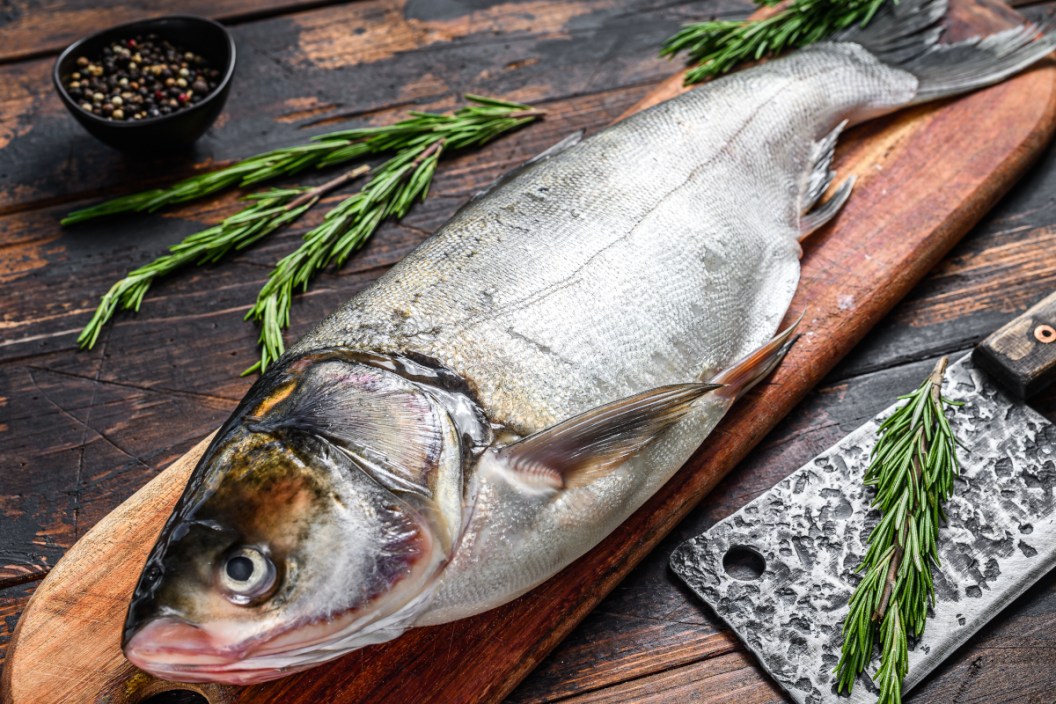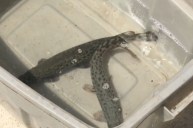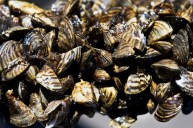Is the best way to get rid of Asian carp by eating them?
North America has plenty of threats from non-native animals, but none as daunting as the freshwater invasive Asian carp. A collective term for a few different invasive species, these fish all have one thing in common. Carp populations have spread like wildfire across the fisheries of the U.S., threatening many ecosystems in the process.
These fish are filter feeders, and their presence creates a sort of trickle-down effect that hurts native fish populations. The carp eat up native species of mussels, snails, and plankton consumed by smaller baitfish. Hurting native baitfish hurts larger predatory game fish, which can then in turn hurt animals that prey upon the game fish.
It is little wonder wildlife authorities are so concerned with exploding populations of Asian carp in lakes and river systems across the country. This begs a question: Why aren't anglers targeting and eating these fish? Is it safe to do so? We'll attempt to answer those and other commonly asked questions today so more fishermen and women can take part in the fight to clean up our waters of these problem fish.
What is an Asian carp?
The term "Asian carp" is actually a blanket term for several different species of freshwater fish, which as you can guess by the name, are native to parts of Asia. The four species of Asian carp that are of the most concern to the U.S. Department of Agriculture are the bighead carp, the black carp, the grass carp, and the silver carp. There are a few other species that get lumped in there including the common carp, but that species is already widespread beyond the point of control in many parts of North America. In any case, these are mostly bottom feeders and are widely considered to be a "trash fish" with many anglers.
As for how these fish got here, it was a series of poor management decisions and accidents that led to the problems that now give many a Department of Natural Resources headaches. These four species were brought over, often by farmers, in the early 1970s. The idea was that bottom-feeding nature would make them ideal for cleaning up aquaculture ponds used for commercial fish breeding.
Unfortunately, many got into the Mississippi River during flooding. Once they were in, the fish spread all over the Midwest via the Mississippi River basin. States like Illinois, Indiana, Kentucky, and Missouri are basically ground zero for the war against these fish. The Illinois River is one of the biggest battlegrounds simply because it filters into several other smaller rivers that then flow into the Great Lakes near Chicago. Biologists worry about the devastating effect on native fish species a spread of non-native carp through Lake Michigan could have. As if that wasn't worrisome enough, the carp have also spread as far north as Wisconsin and Minnesota and as far south as Texas, Louisiana, and Florida.
As if the environmental impacts were not enough, these carp have also proven hazardous to boaters. When disturbed by watercraft, these fish often leap into the air in great numbers. Some people have been severely injured, and a few have even been killed after being struck by leaping Asian carp.
Can you eat Asian carp?
The answer to this question is a resounding yes! In fact, some people report the different species of Asian carp are as tasty as a bluegill or catfish. In fact, in some taste tests, people have chosen one of these fish as their favorite over species like tilapia and other popular eating fish. This begs the question: why are they not more popular as a food source?
Well, unfortunately, the different species of Asian carp are incredibly bony. Especially species like the silver carp, which has a series of Y-shaped bones that are difficult to pick out. There is a way to produce boneless fillets. See the video above for how to do that, but it seems like not many people are familiar with that trick, so they just avoid them.
There are some commercial fishing operations that pluck these invasive critters out of river systems and process them for store shelves, but it has been a hard sell. As we mentioned earlier, carp have a bad reputation as a trash fish and many people are going to be turned away just because of the name. That is probably why some wildlife agencies have tried giving them colorful new nicknames that sound more appealing like "silverfin" and "Kentucky tuna."
It should be mentioned the bulk of the commercially caught carp are sent back to Asian markets where the fish were already cultivated as food for thousands of years. These fish simply seem to be more ingrained in the culture as food there. We should also mention that most experts say that despite their reputation, Asian carp are a very safe fish for human consumption. Again, this comes back to their diet and nature. Because they are mostly vegetarian, the fish have low levels of mercury and other harmful chemicals.
It seems the two most popular methods of preparing these fish are to simply fillet them up and fry them or to steam them. Either way, most people who enjoy them encourage others to not knock them until you have tried them. Think of it this way, by eating Asian carp you are getting a good meal and you are helping our country's native waterways from an invasive species. The other great thing is that because they are invasive, there are no limits to how many you can bring home. Time to get out the bowfishing gear and fill the freezer to capacity with fresh filets!
For more outdoor content from Travis Smola, be sure to follow him on Twitter and check out his Geocaching and Outdoors with Travis YouTube channels.
NEXT: PETA IS NOW GOING AFTER FISHERMEN
WATCH





